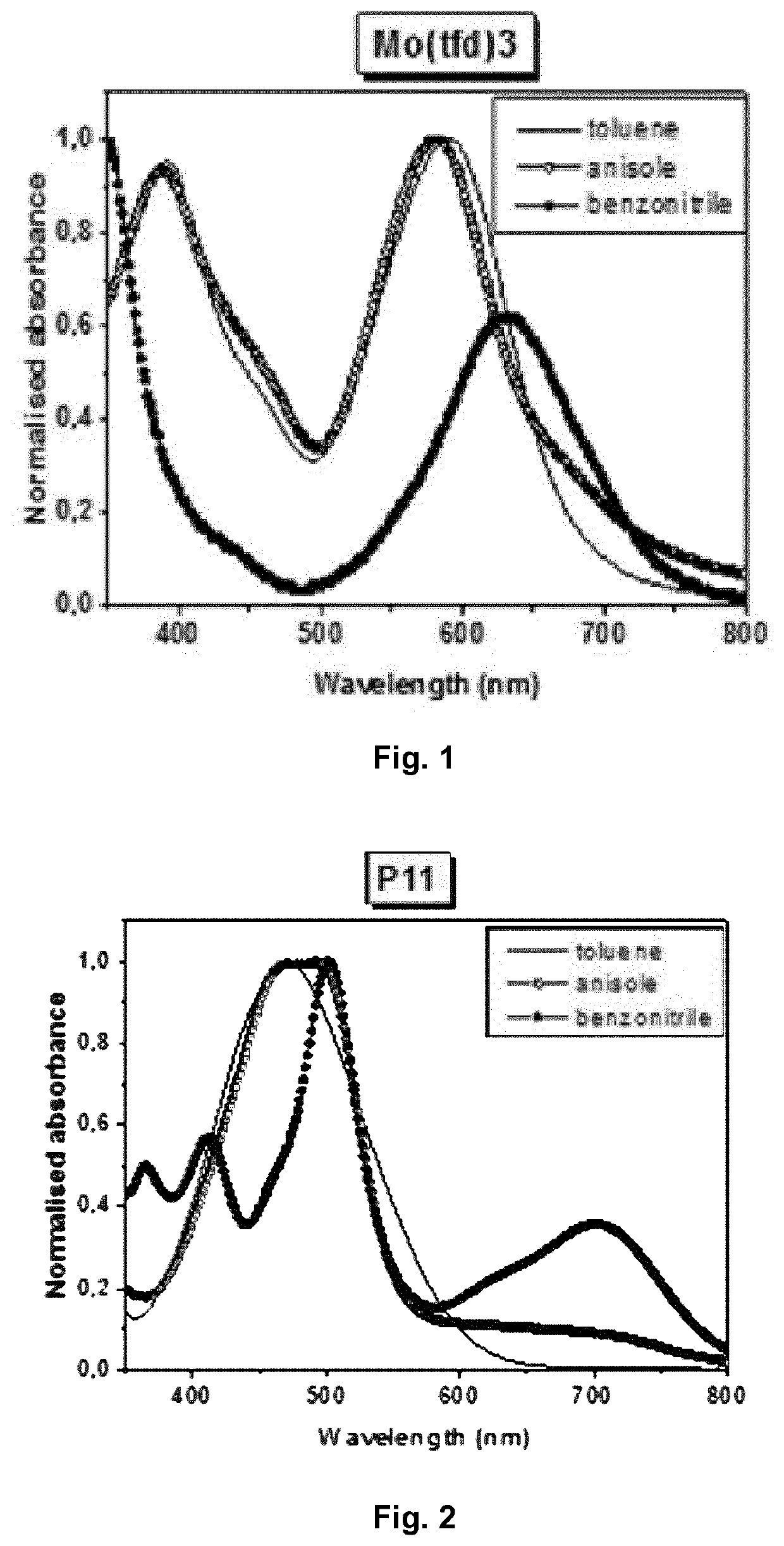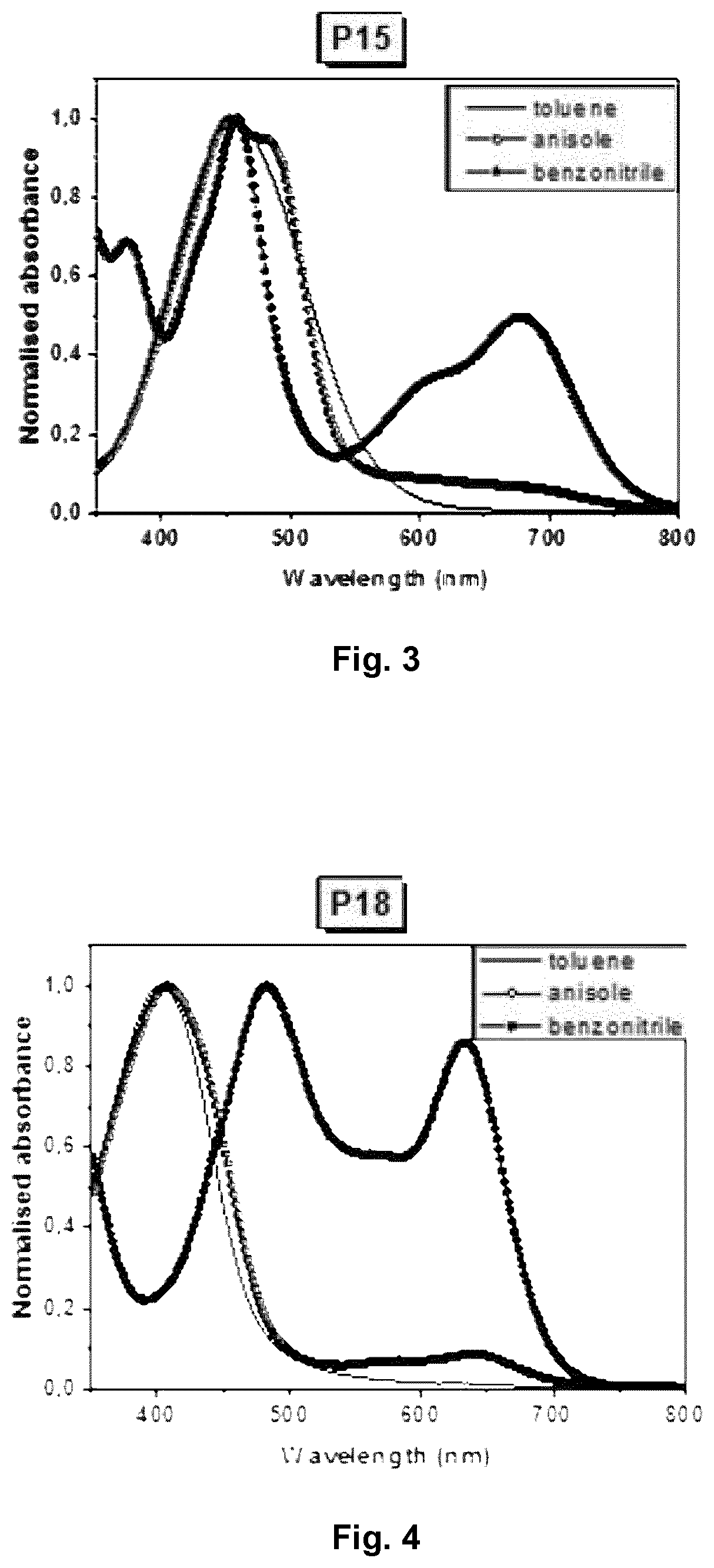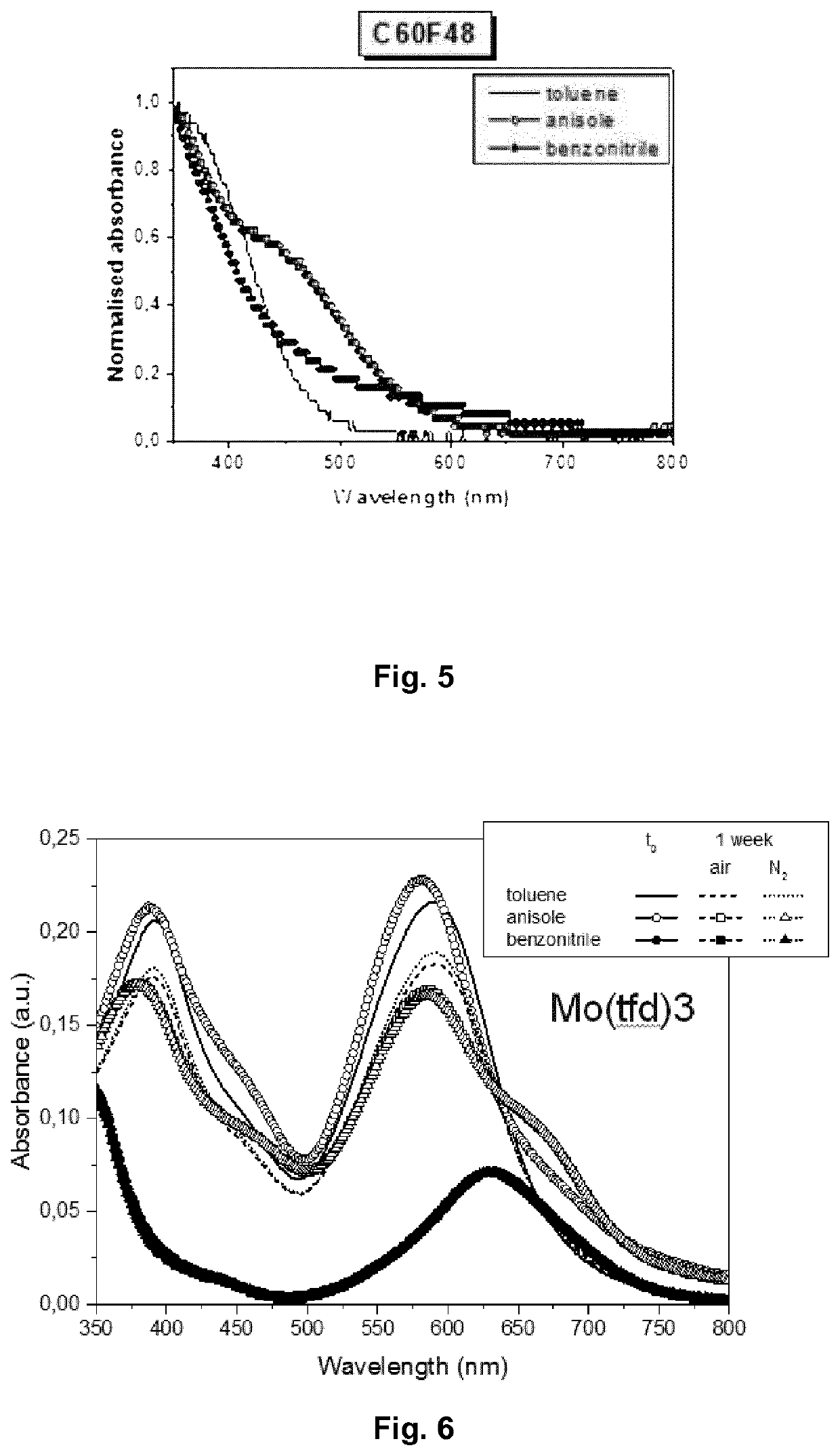Ink Composition for Forming an Organic Layer of a Semiconductor
a semiconductor and organic layer technology, applied in the direction of organic semiconductor devices, inks, solid-state devices, etc., can solve the problems of inability to meet the requirements of organic charge transport material stability, inability to meet the requirements etc., to achieve good stability of organic charge transport material, ink stability over a sufficiently long period of time, and the effect of stable organic charge transport material
- Summary
- Abstract
- Description
- Claims
- Application Information
AI Technical Summary
Benefits of technology
Problems solved by technology
Method used
Image
Examples
Embodiment Construction
[0297]A standard OLED was used to test the inventive ink composition. The layers comprising the inventive OLED devices Inv-OLED-1 to Inv-OLED-4 were deposited sequentially as follows:[0298]ITO / Inventive HIL (40 nm) / HTM-1 (90 nm) / Host-1:Emitter-1 (5 wt %, 20 nm) / n-ETM-1 (30 nm) / LiQ (1 nm) / Al (100 nm)
[0299]First, the ITO on a glass substrate was cleaned using clean-room wipe and toluene solvent and subsequently plasma-cleaned. Subsequently, inv-ink1 was deposited by spin coating in a nitrogen glove box using the following recipe: spin step 1: acceleration=2 s, speed=750 rpm, t=5 seconds; spin step2: acceleration=2 s, speed=1200 rpm, t=30 seconds. The layer was dried on a hot plate at 60° C. for 1 min and subsequently a hard bake for cross-linking was applied for 30 mins at 150° C. All subsequent layers were deposited by vacuum thermal evaporation (VTE) at a pressure of about 1E-7 mbar and a deposition rate of about 1 Angstrom per second for the organic layers and about 3 Angstrom per ...
PUM
| Property | Measurement | Unit |
|---|---|---|
| Temperature | aaaaa | aaaaa |
| Temperature | aaaaa | aaaaa |
| Time | aaaaa | aaaaa |
Abstract
Description
Claims
Application Information
 Login to View More
Login to View More - R&D
- Intellectual Property
- Life Sciences
- Materials
- Tech Scout
- Unparalleled Data Quality
- Higher Quality Content
- 60% Fewer Hallucinations
Browse by: Latest US Patents, China's latest patents, Technical Efficacy Thesaurus, Application Domain, Technology Topic, Popular Technical Reports.
© 2025 PatSnap. All rights reserved.Legal|Privacy policy|Modern Slavery Act Transparency Statement|Sitemap|About US| Contact US: help@patsnap.com



